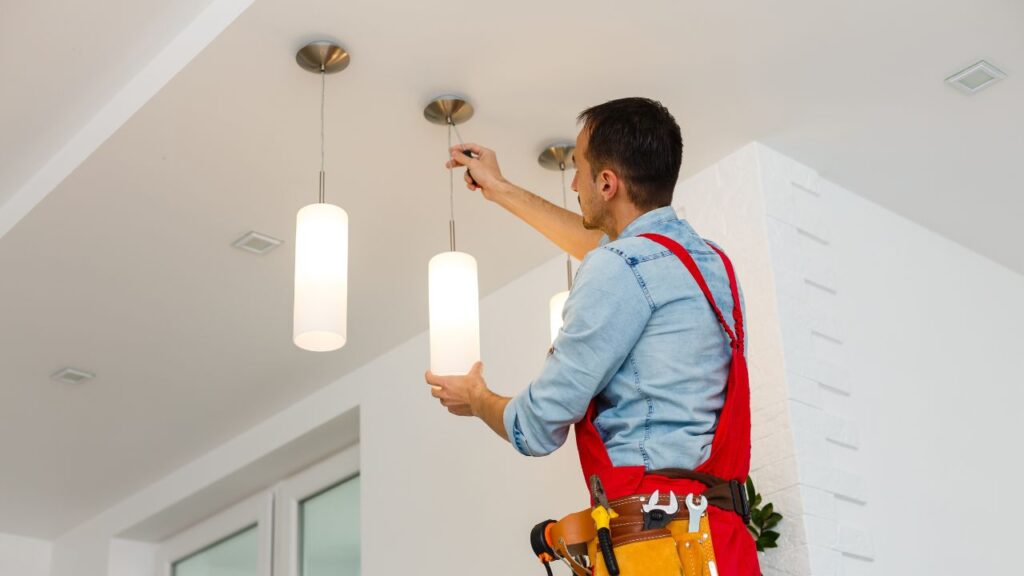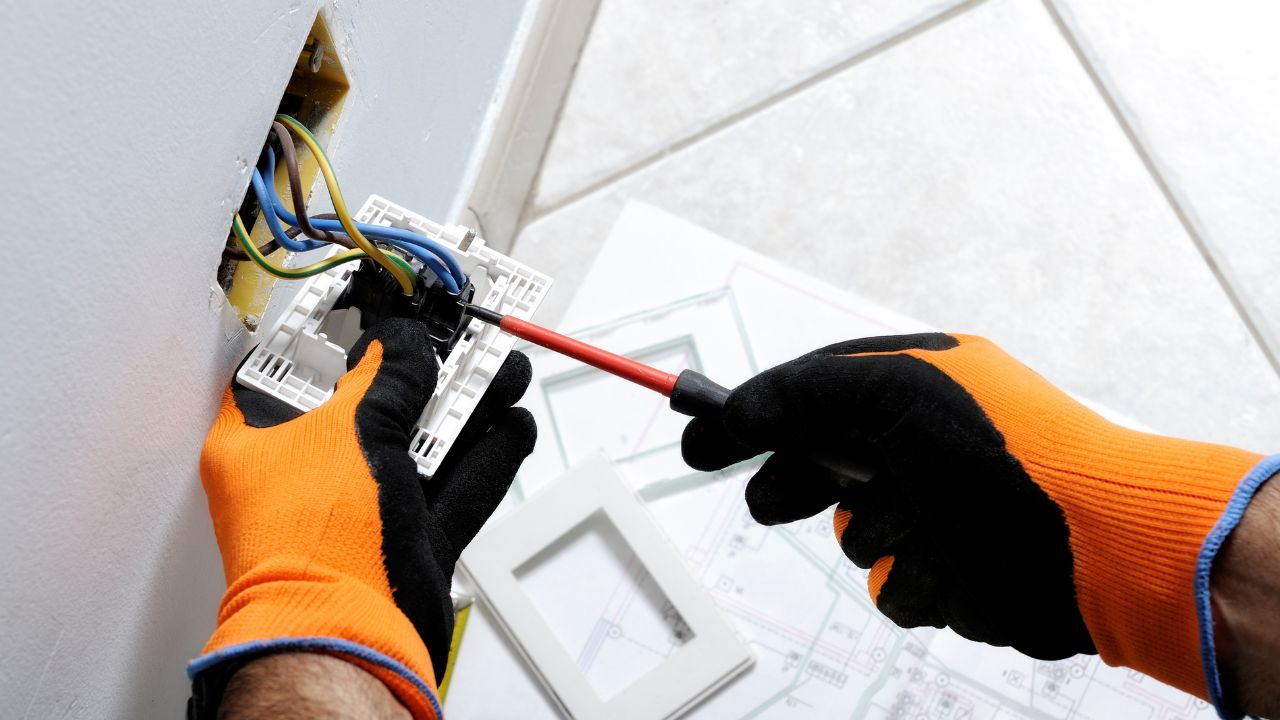Whether it’s a light that won’t stop flickering, a brand-new ceiling fan waiting to be installed, or a full-scale renovation, dealing with your home’s electrical system is inevitable.
Now the question on everyone’s mind is: how much is this going to cost? Electrical work prices can vary, but by understanding the common pricing models and average rates, you can budget effectively and avoid surprises.
1. How Electricians Charge: Understanding The Different Pricing Models
Electricians in Singapore typically use one of three pricing structures:
- Hourly Rates: Often used for troubleshooting jobs (like finding the cause of a power trip) or small, unpredictable repairs. Standard hourly rates generally fall between $50 and $100. Be aware that emergency services, especially after regular working hours or on public holidays, will incur a significant surcharge, often adding $80 to $200 to the bill.
- Per-Point Charges: This is the most common model for installation work. A “point” refers to a single electrical termination, such as a new light switch, a power socket, or a lighting fixture. This model seems straightforward, but it’s a double-edged sword. While it standardizes quotes, the costs can add up quickly. A single room could easily contain 5 to 10 “points” (e.g., four downlights, two double sockets, one switch). It is crucial for you to map out your needs room-by-room to get an accurate point count before agreeing to a per-point quote.
- Fixed-Price/Package Deals: For large, well-defined projects like the complete rewiring of an HDB flat, many contractors offer a package price. This provides cost certainty for the entire project.
- Call-Out/Transport Fees: Almost all electricians will charge a minimum fee for coming to your location. This is often called a transport, inspection, or call-out fee and typically ranges from $30 to $80. This fee covers their travel costs and initial diagnosis. Some electricians may agree to waive this fee if you decide to proceed with the quoted work.
2. Price Guide For Common Electrical Jobs
Here is a consolidated guide to the average costs for common residential electrical jobs in Singapore, based on 2024 and 2025 price lists. Note that prices can vary based on the factors discussed in the next section.
| Service Description | Average Cost Range | Common Pricing Model |
| Troubleshooting & Inspection (e.g., power trip, safety check) | $50 – $150 | Per Job / Hourly |
| Light Bulb / Fitting Replacement | $60 – $120 | Per Item / Per Job |
| Install New Lighting Point | $40 – $80 | Per Point |
| Install Ceiling / Wall Fan | $80 – $180 | Per Fan |
| Replace Power Socket / Switch | $60 – $90 | Per Item |
| Install New Power Socket (13A) | $65 – $120 | Per Point |
| Install Aircon / Water Heater Point (15A/20A) | $105 – $245 | Per Point |
| Replace DB Box (Circuit Breaker Box) | $250 – $700+ | Per Job (depends on flat size) |

3. HDB Rewiring Cost Guide
One of the largest electrical projects a homeowner might undertake is a full rewiring. This is often necessary for older flats (typically those over 25 years old) to ensure the system can safely handle the load of modern appliances and to replace aging, potentially hazardous wiring. This is a major job, and prices reflect that.
| HDB Flat Size | Average Rewiring Cost Range |
| 3-Room HDB | $1,500 – $5,000 |
| 4-Room HDB | $1,800 – $5,500 |
| 5-Room HDB | $2,300 – $7,000 |
| Executive / Maisonette | $2,600 – $3,500+ |
4. What Affects The Final Cost?
Two electricians can provide very different quotes for what seems like the same job. This is because several key factors significantly influence the final price. Understanding these variables will help you decode your quote and have a more informed discussion with your contractor.
- Complexity of the Job: The most obvious factor. Troubleshooting an intermittent fault that requires extensive investigation will cost more than a straightforward socket replacement.
- Property Type and Size: Larger properties like landed homes or maisonettes naturally require more materials and labour compared to a 3-room HDB flat, leading to higher costs.
- Age of the Property: Electrical systems in older buildings can be a Pandora’s box. Brittle wires, outdated standards, and crumbling infrastructure mean a simple job can quickly become more complex and time-consuming, increasing labour costs. When an electrician asks about the age of your flat, they are not just making conversation; they are performing a risk assessment for potential complications.
- Accessibility (Concealed vs. Exposed Wiring): This is one of the biggest budget forks you will encounter, especially during a renovation.
Exposed wiring is run along walls in white PVC trunking. It is fast, simple, and cheaper. A standard exposed point costs around $45-$80.
Concealed wiring is hidden inside walls or false ceilings for a cleaner aesthetic. This is far more labour-intensive, requiring hacking, plastering, and repainting. The cost for a concealed point can easily jump to $100-$120 or more. This single choice can double the cost of your electrical points.
- Quality of Materials: The brand and quality of the materials used, from the wires in the wall to the switches and sockets from brands like Legrand or Schneider, will affect the price.
- Urgency and Timing: Need an electrician at 3AM for a power failure? Expect to pay a premium. Emergency call-outs and work on public holidays come with hefty surcharges.
- Unlicensed vs Licensed electrician: In Singapore, a Licensed Electrical Worker (LEW) is a person who is certified and licensed by the Energy Market Authority (EMA) to carry out electrical work.
Hiring an unlicensed electrician might save you a few dollars but there are risks involved. Unlicensed electricians often lack proper training, use substandard materials, or are unaware of current safety codes. This can lead to shoddy work that creates a high risk of electrical fires, shocks, and system malfunctions.
5. What to Look For in Your Quotation
A professional quotation is more than just a price, it’s the blueprint for your service agreement. A vague quote can lead to disputes over scope and cost later on. Treat the quote as the draft of your contract and ensure every detail is clear before you sign.
You can use this checklist to evaluate and compare the quotes you receive.
- Company & License Details: The company’s name, address, contact information, and the Licensed Electrical Worker’s (LEW) license number are clearly stated.
- Detailed Scope of Work: A clear, itemized list of all tasks to be performed (e.g. “Supply and install 4 new double power sockets in master bedroom using concealed wiring”).
- Itemized Material Costs: A breakdown of the materials to be used, including brand names and cost per item (e.g. “4 x Legrand Mallia double sockets @ $20 each”).
- Itemized Labour Costs: A clear breakdown of labour charges, whether per point, per hour, or as a lump sum for the project.
- Breakdown of Additional Fees: Any other charges like GST, transport fees, or inspection fees are listed separately.
- Total Cost: The final, all-in price is clearly stated.
- Projected Timeline: Estimated start and completion dates for the project.
- Payment Terms: The required deposit amount and the schedule for subsequent payments are specified.
- Warranty Details: The duration and scope of the workmanship and parts warranty are clearly mentioned in writing. Read our article about what’s covered in the warranty for electrical work.
- Permit Responsibility: The quote clarifies who is responsible for obtaining any necessary permits from local authorities
6. Conclusion
While budget is important, the cheapest quote is rarely the best value. A reliable, safe, and high-quality job from a licensed professional who stands behind their work with a solid warranty is a far better investment in the long-term safety and functionality of your home.









